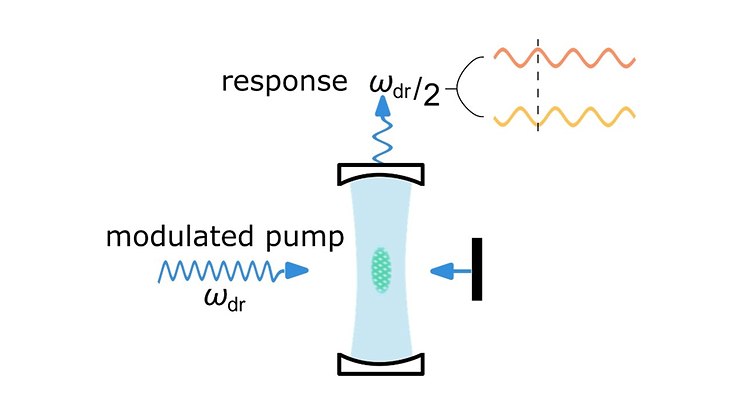Quantum Physics
Observation of a continuous time crystal
8 June 2022

Photo: AG Hemmerich
Following Franck Wilczek’s proposal of a new dynamical phase dubbed time crystal, discrete or Floquet time crystals have been observed in periodically driven closed and open quantum systems. However, in all of these experiments, the continuous time translation symmetry is already broken by a time-periodic drive. The challenge remains, to realize a system, which breaks spontaneously a continuous time translation symmetry. This was proposed for a driven open quantum system, where in contrast to closed system time crystals, the dissipation has a positive role, since it actually stabilizes the oscillation rather than melts the time crystal.
We report the observation of spontaneous breaking of a continuous time translation symmetry in a dissipative atom-cavity system. Using an atomic Bose-Einstein condensate inside a high-finesse optical cavity, with a time-independent pump, we observe a limit cycle phase, which is characterized by periodic oscillation of the intracavity photon number accompanied by the atomic density cycling through recurring patterns. We show that the time phase of the oscillation can take any value between 0 and 2π, as it is expected for a spontaneously broken continuous symmetry. Furthermore, we demonstrate the robustness of the dynamical phase by first, identifying its stability area in the relevant parameter space and, second, showing the persistence of the limit cycle oscillations in the presence of strong temporal perturbations. Hence, we demonstrate, for the first time, the realization of a continuous time crystal.
Observation of a continuous time crystal
Phatthmon Kongkhambut, Jim Skulte, Ludwig Mathey, Jayson G. Cosme, Andreas Hemmerich, and Hans Keßler, First Release in Science, 377, 6606, pp. 670-673 (2022)


